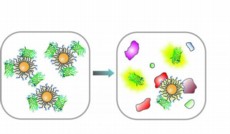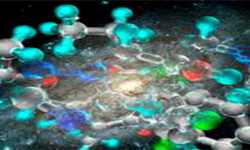Science
First Planets Found Around Sun-Like Stars in a Cluster

Astronomers have discovered two gas giant planets orbiting stars in the Beehive cluster, a collection of about 1,000 tightly packed stars.
- Read more
- 498 reads
NASA Mars Rover Opportunity Reveals Geological Mystery

Small spherical objects fill the field in this mosaic combining four images from the Microscopic Imager on NASA's Mars Exploration Rover Opportunity. The view covers an area about 2.4 inches (6 centimeters) across, at an outcrop called "Kirkwood" in the Cape York segment of the western rim of Endeavour Crater. The individual spherules are up to about one-eighth inch (3 millimeters) in diameter.
- Read more
- 493 reads
New research suggests the Met Office has made steps forward in providing improved long-range guidance for winters.

Satellite Image of UK Snow
- Read more
- 471 reads
Nuclear Technologies Secure Food For Future
For nearly fifty years, applications of nuclear technology have been helping the world's farmers, contributing new varieties of crops, controlling pests, diagnosing livestock disease, improving soil and water management and increasing food safety.
- Read more
- 445 reads
Two Opposing Worlds Meet: Development or Death (Part I)
The Stockholm World Water Week, Aug. 26-31, sponsored by the Swedish state's International Development Cooperation Agency, and such global cartel companies such as Nestle and PepsiCo, but dominated by the World Wildlife Fund (WWF), the Stockholm Environmental Institute, and similar malthusian propaganda outlets, promised to be orgy in green ideological madness, where African and Asian nations are regarded by Europe and the U.S.A. as an embarrassing burden, and that those nations should be convinced that their misery could only be reduced, but not relieved, by small hand-outs, instead of large-scale industrial and infrastructural development.
- Read more
- 439 reads
UMass Amherst Chemists Develop Nose-like Sensor Array to 'Smell' Cancer Diagnoses

In a pre-clinical non-small-cell lung cancer metastasis model in mice developed by Frank Jirik and colleagues at the University of Calgary, Rotello's team at UMass Amherst use a sensor array system of gold nanoparticles and proteins to "smell" different cancer types in much the same way our noses identify and remember different odors.
- Read more
- 554 reads
A Celestial Witch’s Broom?

The Pencil Nebula is pictured in a new image from ESO’s La Silla Observatory in Chile. This peculiar cloud of glowing gas is part of a huge ring of wreckage left over after a supernova explosion that took place about 11 000 years ago.
- Read more
- 414 reads
Nuclear Power: Extracting Uranium from Seawater

The material, HiCap (from high-capacity), outperforms today's adsorbents, which perform surface retention of solid or gas molecules, atoms or ions.
- Read more
- 418 reads
Non-Cytotoxic Nanosilver Structures Bring New Hope for Curing Infections

The obtained nanostructure is nontoxic to human cells, in contrast to the conventional silver nanoparticles, and possesses a spectacularly enhanced antibacterial effect.
- Read more
- 483 reads
Hubble Spotted a Supernova in NGC 5806

Hubble sees a supernova explosion called SN 2004dg on the edge of NGC 5806, a spiral galaxy in the constellation Virgo. It lies around 80 million light years from Earth.
- Read more
- 437 reads
Human Rights
Fostering a More Humane World: The 28th Eurasian Economic Summi

Conscience, Hope, and Action: Keys to Global Peace and Sustainability

Ringing FOWPAL’s Peace Bell for the World:Nobel Peace Prize Laureates’ Visions and Actions

Protecting the World’s Cultural Diversity for a Sustainable Future

Puppet Show I International Friendship Day 2020

